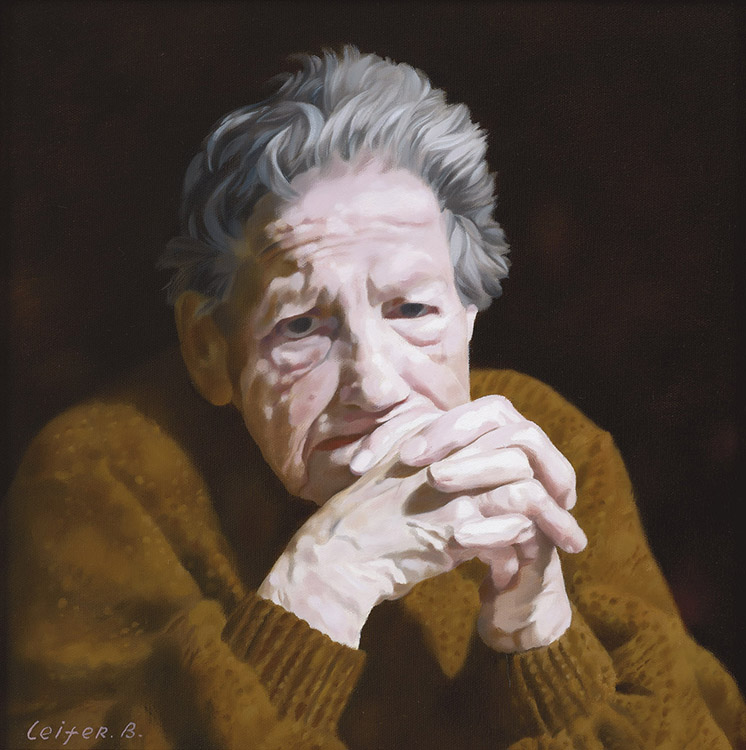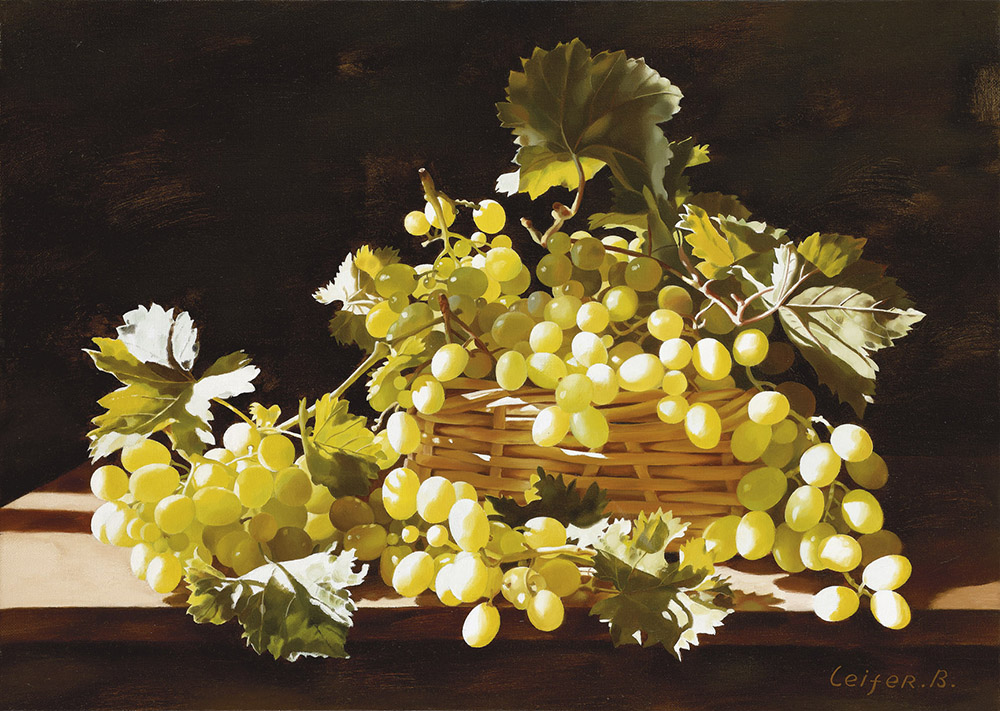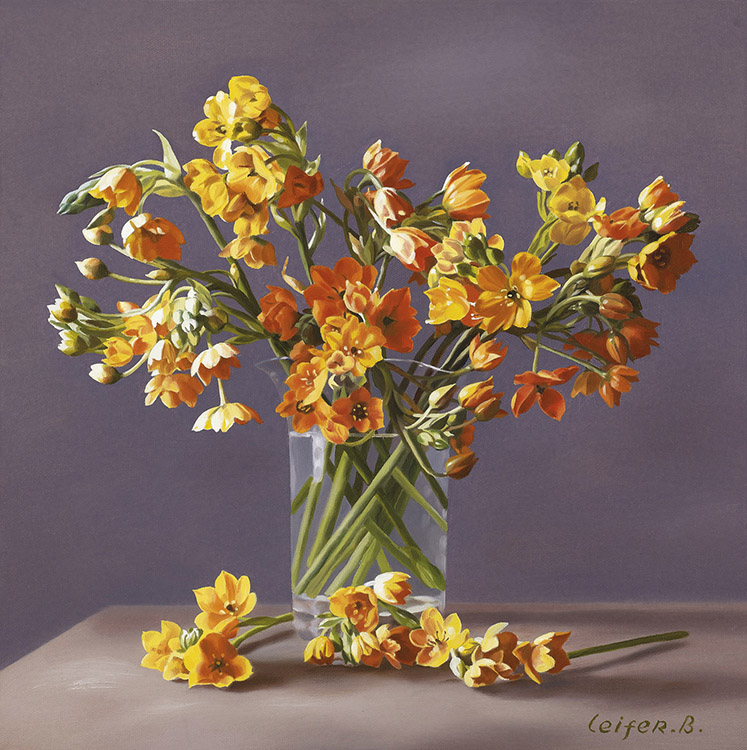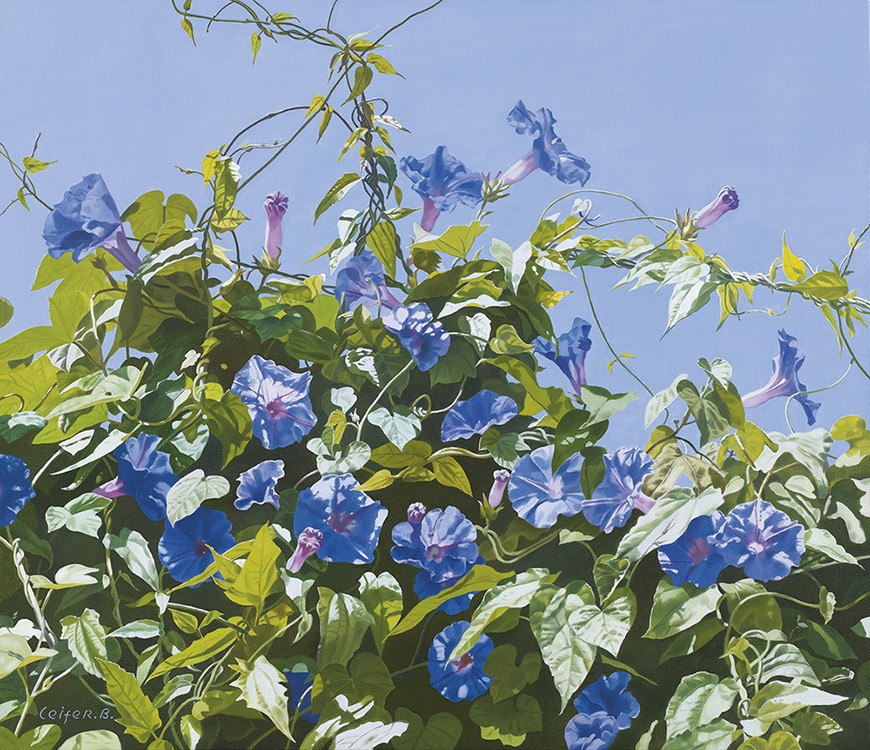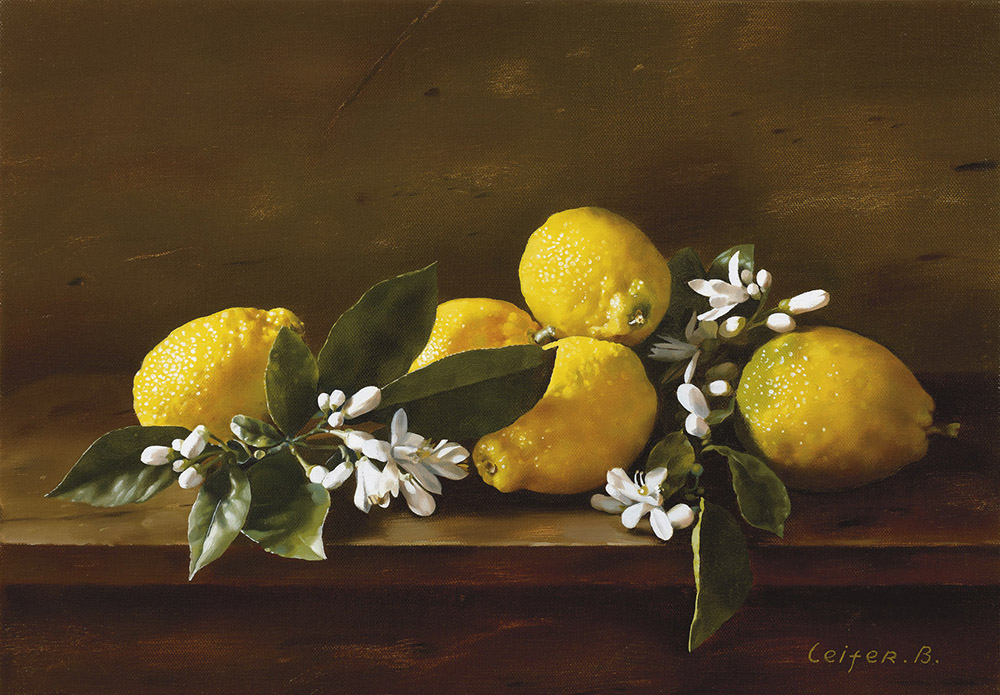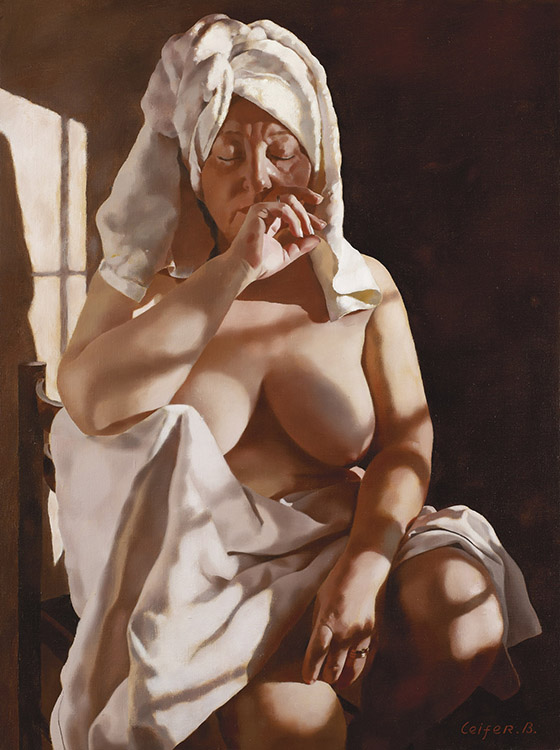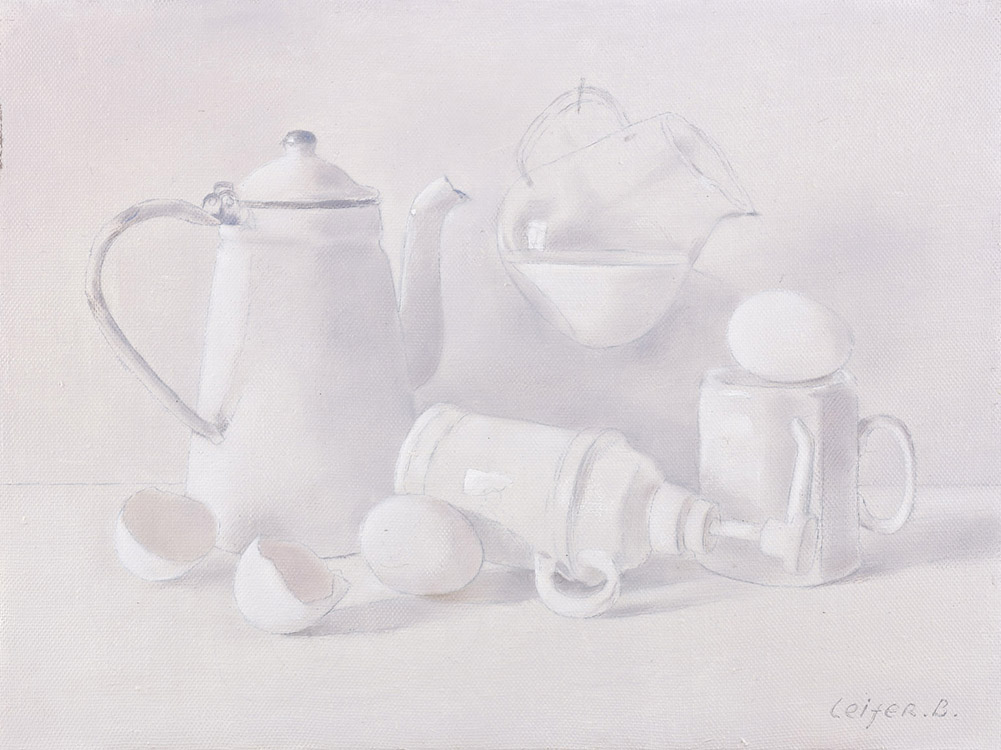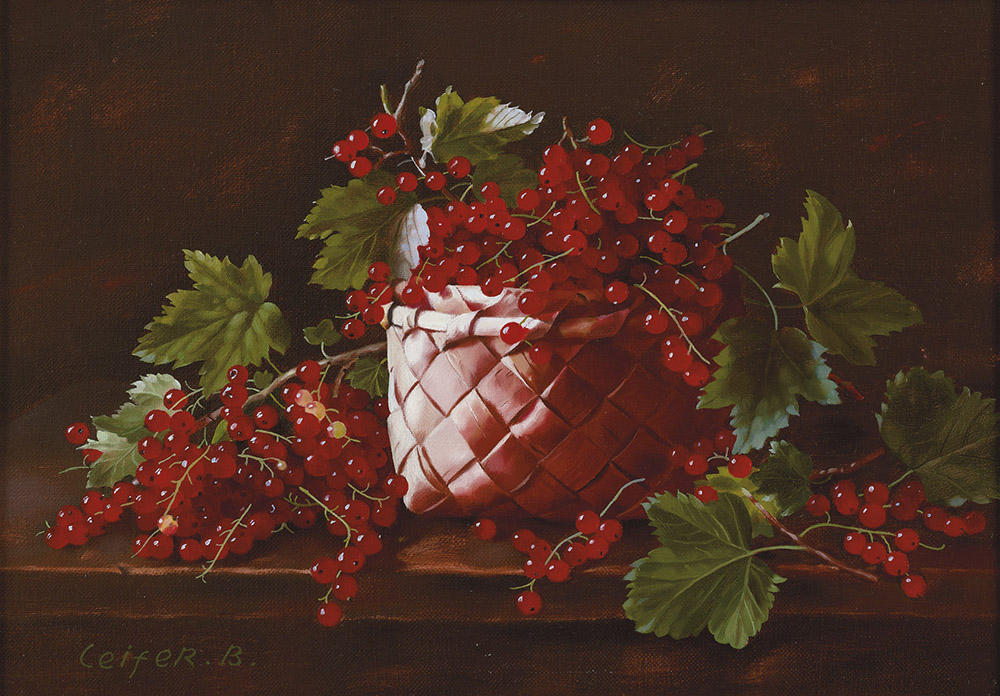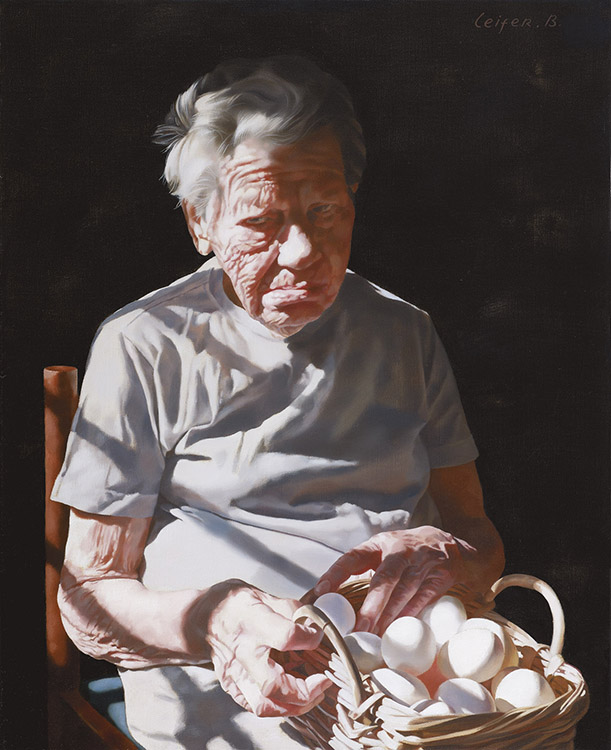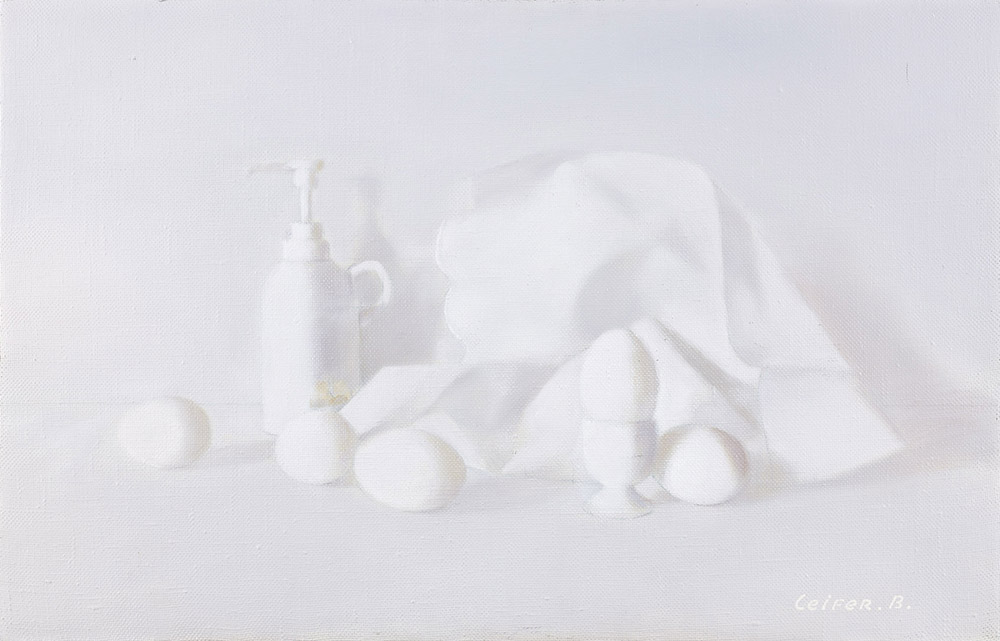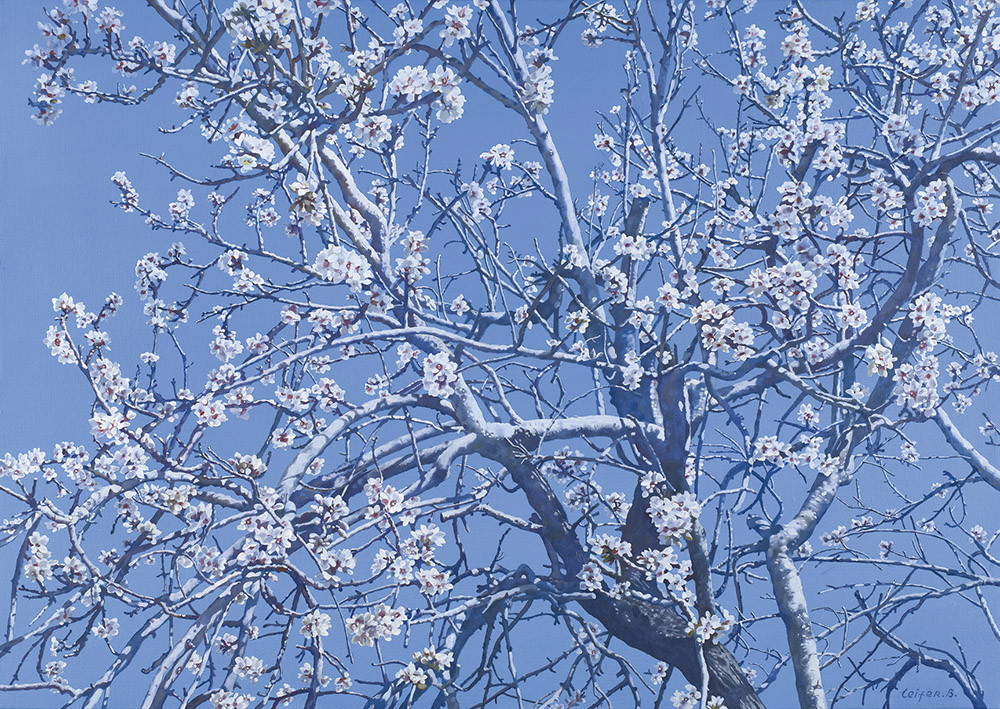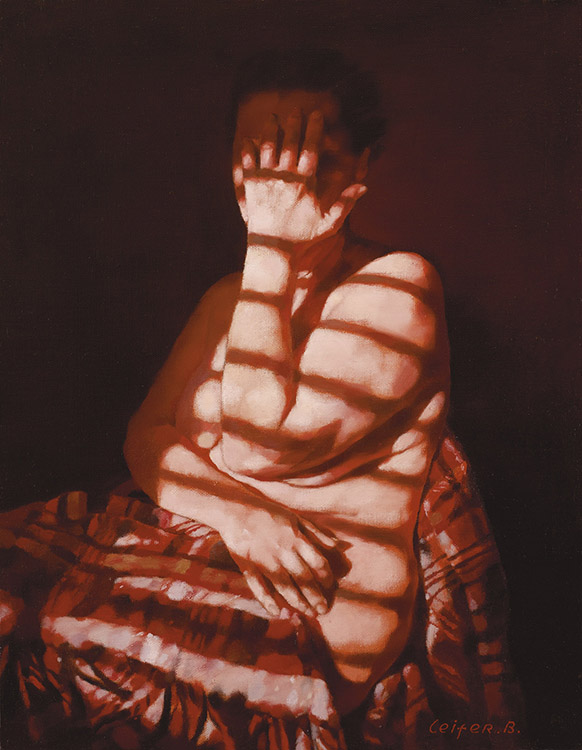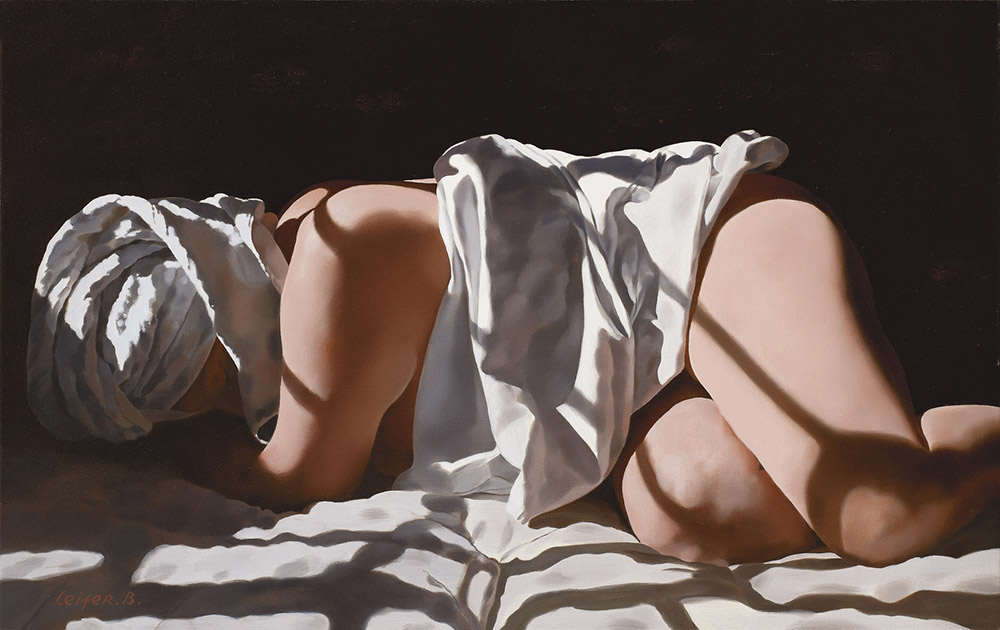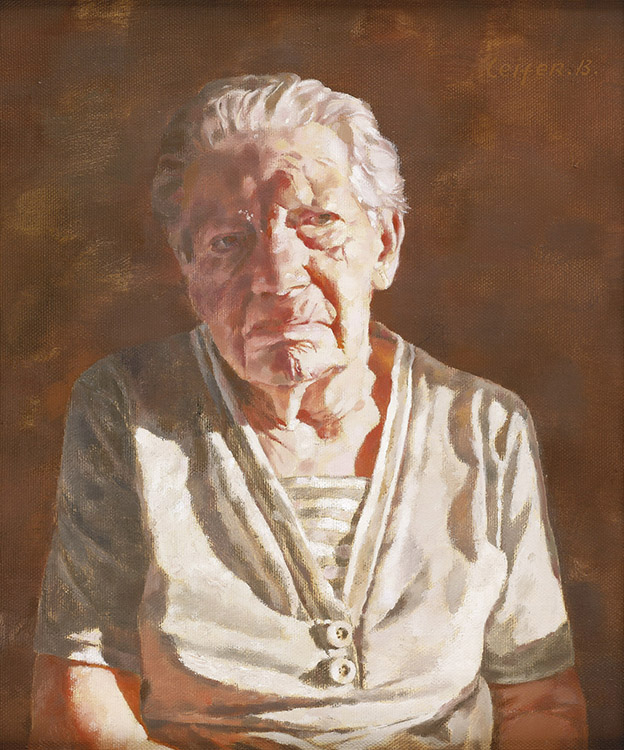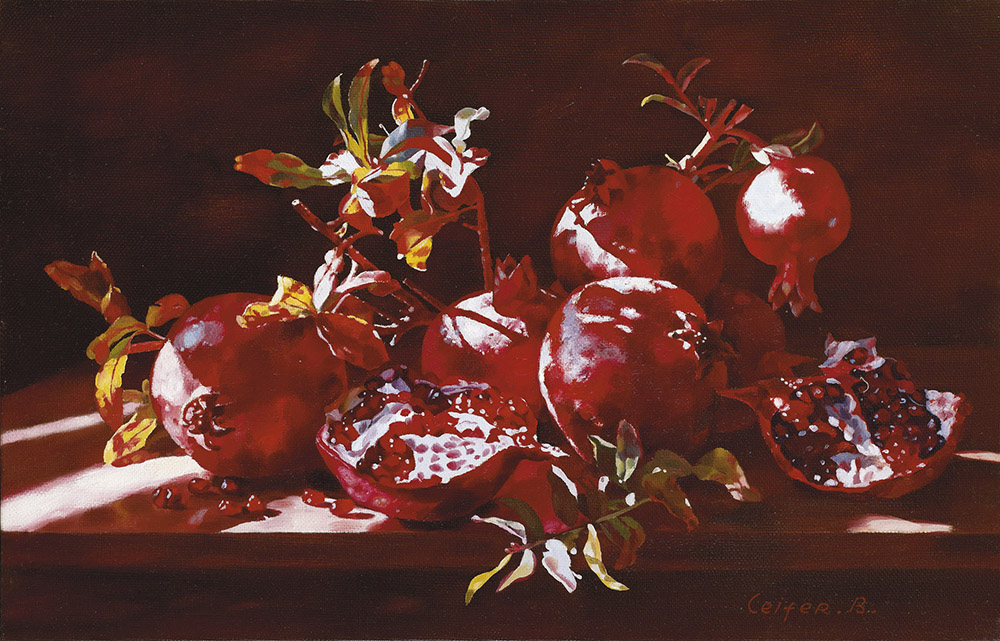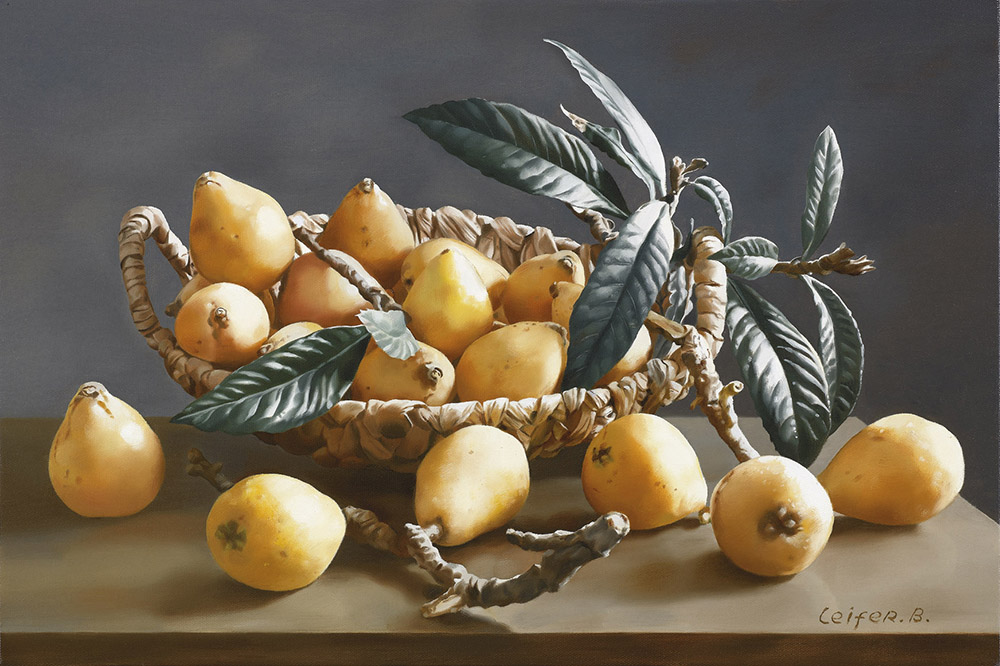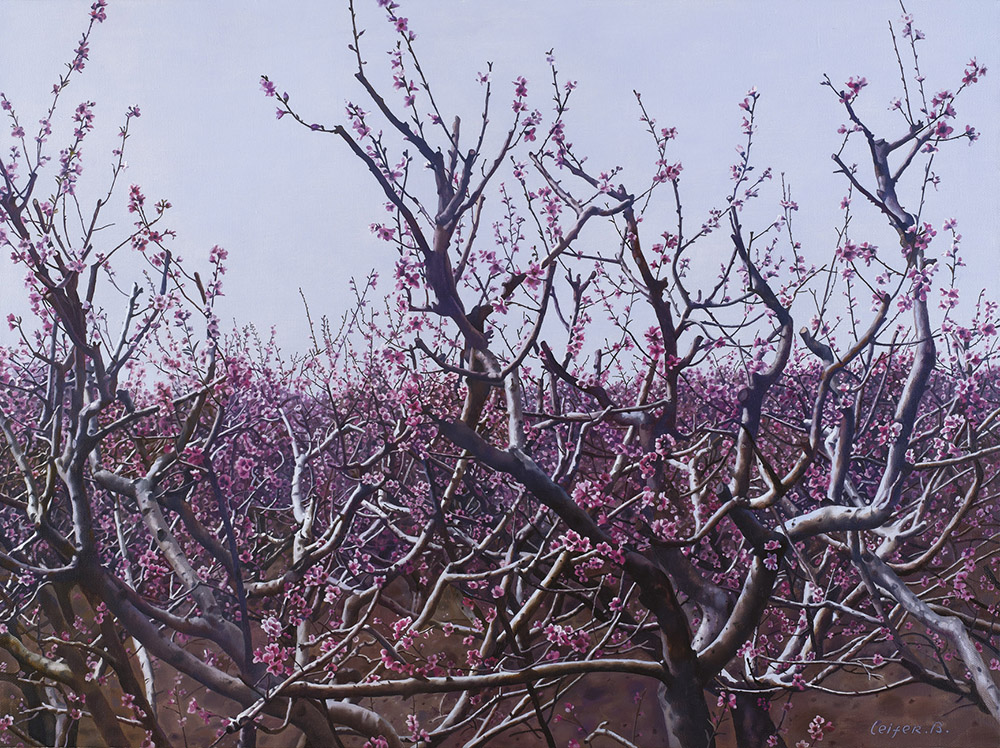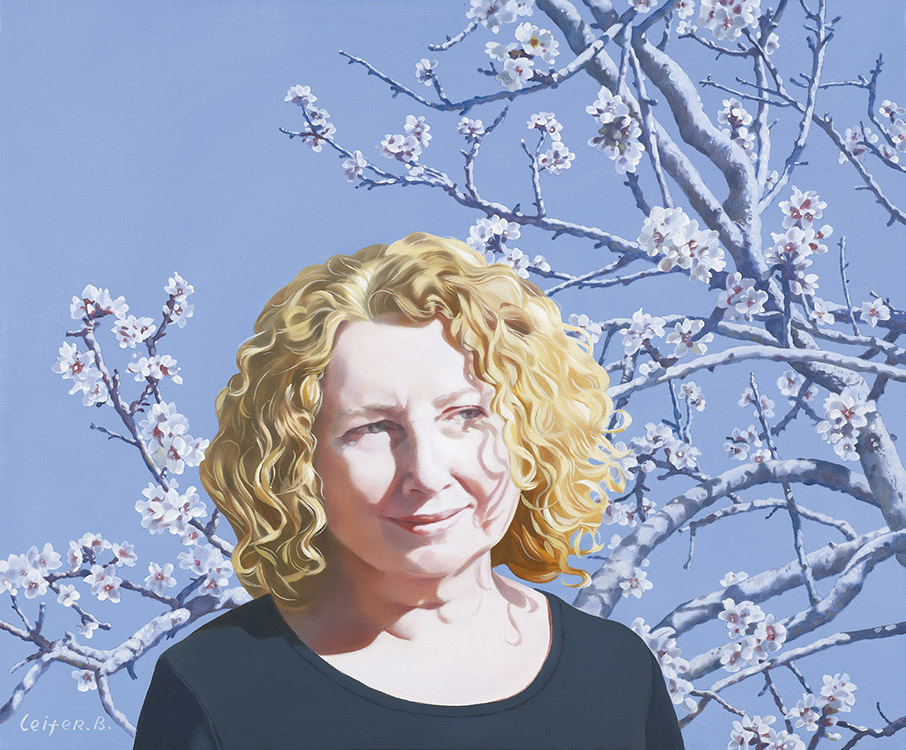|
<Back |
Next> |
Zeus Branch
"Purple figs dripping with juice are heaped on vine-leaves; and they are depicted with breaks in the skin, some just cracking open to disgorge their honey, some split apart, they are so ripe. Near them lies a branch, not bare, by Zeus, or empty of fruit, but under the shade of its leaves are figs, some still green and 'untimely', some with wrinkled skin and over-ripe, and some about to turn, disclosing the shining juice, while on the tip of the branch a sparrow buries its bill in what seems the very sweetest of the figs. All the ground is strewn with chestnuts […] pears on pears, apples on apples […] all fragrant and golden. You will say that their redness has not been put on from the outside, but has bloomed from within. Here are gifts of the cherry tree, here is fruit in clusters heaped in a basket, and the basket is woven, not from alien twigs, but from branches of the plant itself. […]" -- Philostratus 1
One cannot find a more suitable description of the succulence of the pomegranates and the sensuality of the grapes, the blossoming of the flowers and mellowness of the women on artist Boris Leifer's canvases, than the poetic images of 3rd-century Greek-Roman sophist Philostratus, who praised not only the fruits themselves, but also the brush strokes and the anonymous artist's handwriting. Lyric utterances about a work of art are akin to Ekphrasis , namely a literary representation of a visual image, a prevalent device in antiquity. The writer revels in his words on the painterly sight revealed to him—in itself a manifestation of a hedonistic state of mind. Leifer 's lush fruits and depictions of flowers in full bloom forthwith call 17th-century Dutch still life to mind. The flowers and fruits in these paintings, deemed vanitas , were intentionally depicted over-ripe to indicate life's transience and the memory of death ( memento mori ) awaiting every human being. In light of the visual likeness to these contexts, the question arises: Would it be correct to consider Leifer 's images in the hedonistic Roman context, or more accurate to regard them in the moralistic, educational context of Dutch painting? Boris Leifer was born in Ukraine in 1946. In 1969-1975 he studied at the Saint Petersburg Academy of Arts , an institution linked to traditional European painting . Subsequently, he worked as set designer for the Russian theater. His images indeed surrender a distinct theatrical quality: the flowers, the fruit, the still life, and the women. Usually set against a dark background, these images radiate with light in a manner reminiscent of the still-life renditions of 17th-century Italian artist, Michelangelo de Caravaggio (1571–1610). Perusal of the images on Leifer 's canvases is awe-inspiring, not because of the comparison to Caravaggio, but due to the feeling that the painterly act itself glows with internal, virtually sacred light. Indeed, Leifer himself stresses the importance of light in the process of creation, noting that on a sunless day he refrains from painting altogether. He further adds that while painting a composition of flowers, he thinks of a musical composition, striving to create a balanced harmony between the flowers. Respect and praise for the painterly act in the world of antiquity stemmed from profound admiration for the artist's skill in creating an illusion of a mimicry of nature, intended to convey the yearning for harmony between man and nature, and the difference between nature and culture. 2 The artist vanquishes nature, so to speak, with his brush. It is important to note, however, that although the qualities of the work of art in antiquity were gauged by its faithfulness to nature, it was not devoid of spiritual context. Naturalism and mimesis (imitation of nature) in fact served a form of thinking which reflects, on the one hand, the place of nature and divinity in human life, and on the other—the social apparatus. The ripeness of the grapes, for instance, was directly associated with the Dionysian world, whereas the lushness of the pomegranates was tied with the opulence and fertility of the Earth goddess, Demeter. As a social expression, Roman still life represented the diversified refreshments offered to guests, xenia , symbolizing the host's generosity and nature's abundance. The figs, the honey, the basket of cherries, the milk and cheeses are all foods presented to guests as part of the ceremony of bringing the stranger ( xenos ) and extending hospitality, under the auspices of Zeus, God of Hospitality. 3 Opulence is a godsend, as indicated in Euripides 's play " The Bacchae ": When the women perform the divine rite, milk and wine spring from the ground, and pure honey oozes from the branch sanctified to the god Dionysus. 4
"… on a leafy branch is yellow honey already within the comb and ripe to stream forth if the comb is pressed; and on another leaf is cheese new curdled and quivering; and there are bowls of milk not merely white but gleaming, for the cream floating upon it makes it seem to gleam." 5
In this painterly depiction, Philostratus used a "white-on-white" effect. Interestingly, this effect is also found in Leifer 's series of works, which portrays eggs and pearly white porcelain ware on a white backdrop, shrouded in mist. These images invoke a domestic intimacy as that of the "Milkmaid" by 17th-century Dutch artist, Jan Vermeer. Nevertheless, Vermeer's milk maid , who is depicted with sharp realism, is a simple girl pushed into the corner of a room with peeling walls. Vis-?-vis this simplicity, Leifer 's lustrous vessels stand out in all their glory, and the mist engulfing them lends them a mysterious, theatrical air. In some respects, the definition white-on-white immediately conjures up Kazimir Malevich, a formative Russian artist. This analogy is also valid conceptually: Malevich strove for sublime aesthetic purity in his work by means of abstraction; it seems that Leifer in his figurative images also strives for utmost, Platonic purity . The white vessels depicted on his canvases seem to produce internal light and glow, as described by Philostratus, an appearance which is an illusion of sorts, an illusion of a simple reality, beautified to become seductive and pleasing. The illusion is, in fact, a contradiction in terms: the illusion of materiality, and the illusion of beauty and brilliance engulfing it until the aforesaid materiality seems to dissolve entirely. Leifer seems to compete with the limits of ability, with nature itself. Provoking these limits raises thoughts about the illusions provided by the overly wealthy Trimalchio , in Petronius's Satyricon , during the banquet he held to amuse his friends. 6 Trimalchio 's world view is manifested in his statements: "Poor man is nothing in the scheme of things / And Orcus grips us and to Hades flings / Our bones! This skeleton before us here / Is as important as we ever were! / Let's live then while we may and life is dear." 7 Trimalchio , who considers purchasing the island of Sicily, tries to evade the limitations of wealth and furnish his guests with imaginary experiences by means of a boundless plentiful meal rife with pranks, such as an opening ceiling from which perfume is sprinkled on the guests, song birds erupting from the belly of a roasted hog and flying off, and so on. These meeting points tie Leifer 's work to a type of hedonism; pleasure taken in the act of creation itself. The female images populating his canvases likewise attest to this jouissance : lush women wrapped in bed sheets, revealing more than they conceal, alongside elderly women marked by age. Both are Venus-like: a woman, a mellow goddess, fertile, a goddess of spring, bloom, and love. The analogy to flowers and ripe fruit is inevitable: the woman as a flower, the woman as a fruit bursting with ripeness. These women are portrayed in a dark space, lit from an unknown source, as an additional allusion to the perception of shade in Caravaggio 's work. This darkness generates a simultaneous sense of mystery and shining. Leifer 's pleasure is clear: it is pure painting, which ostensibly challenges the limits of mimesis. The mystery, brilliance, effort, and pleasure are all closely tied to the deepest yearning in antiquity: to acquire the divine spark, to experience a fusion with divinity. In his artistic work Leifer undergoes a hedonistic experience, an experience of sublime jouissance , as if nature, the flowers, the branches were the divine spark. He shares this experience with the viewer as if he were Trimalchio , pleasing his guests and treating them to xenia refreshments. The viewer, on his part, like Trimalchio 's companions, is granted a glimmer of a divine spark of pleasurable spiritual refreshments.
Nava Sevilla Sadeh December 2015 Notes
1. Philostratus, Imagines , trans. Arthur Fairbanks ( Cambridge, Mass.: Harvard UP, 1931), I.31. 2. Norman Bryson, Looking at the Overlooked: Four Essays on Still Life Painting ( Cambridge, Mass.: Harvard UP, 1990), pp. 21-22. 3. Ibid., pp. 23-25. 4. Euripides, The Bacchae and Other Plays , trans. Philip Vellacott (London: Penguin Classics, 1973), lines 705-711. 5. Philostratus, Imagines , I.31 . 6. Petronius Arbiter, The Satyricon , trans. David Widger, e-book, http://www.fullbooks.com/The-Satyricon-v2-Dinner-of-Trimalchio.html. 7. Ibid., 5.34 .
|
